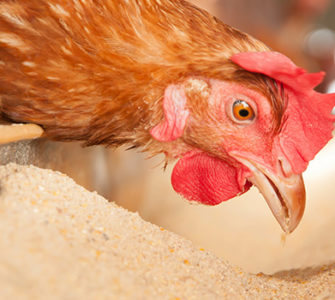Superbug warning over India’s poultry antibiotics use
The use of antibiotics for growth promotion in Indian poultry production is helping to breed bacteria that are highly resistant to most antibiotics, scientists have warned.
Random tests on 18 poultry farms in the state of Punjab found that birds showed resistance to ten different antibiotics used to treat illness in humans.
Meanwhile almost two-thirds of birds tested positive for enzymes that destroy most penicillin- and cephalosporin-based antibiotics.
The study, carried out by Centre for Disease Dynamics, Economics and Policy in New Delhi, saw scientists test how 1,556 Escherichia coli isolates react to 11 different antibiotics used in human health.
They found resistance in almost all the treatments, with high levels of resistance to nalidixic acid (86%), tetracycline (47%), ampicillin (43%), co-trimoxazole (42%), and ciprofloxacin (39%).
More than 50% were found to be multi-drug resistant, while 60% showed signs of a super germ known as extended-spectrum beta-lactamase (ESBL), which is resistant to all but the most powerful go antibiotics.
Broiler farms more susceptible
Published in Environmental Health Perspectives, the study’s authors suggest antibiotic resistance is linked to farming practices, with broiler farms more than twice as likely to harbor antibiotic-resistant E. coli than layer farms.
Broiler farms are also more likely to show signs of ESBL than layer farms (87% vs 42% respectively), they said.
Lead author Ramanan Laxminarayan said the results are likely to be linked to the higher use of antibiotics on broiler farms, which are needed to sustain rapid growth of chickens over short amounts of time.
Higher rates of resistance among independent farms could also suggest that those businesses misuse antimicrobials, and don’t have the hygiene and veterinary care seen on larger, contracted units.
‘Disturbing trends’
Laxminarayan said the study also revealed ‘disturbing trends’ in the indiscriminate use of antimicrobials.
“All poultry farms included in this study used antimicrobials, and over half of them used antimicrobials for growth promotion rather than solely for disease prevention or treatment,” he said.
“Antimicrobials are often employed when broilers are being transported or held prior to slaughter to help them tolerate stress.
“Anecdotally, one farmer noted that antimicrobials were more effective than hygiene or sanitation measures because labor on poultry farms is unskilled, making it difficult to ensure that all hygiene procedures are followed.”
Laxminarayan said it is important that more work is done to identify which farming practices are driving the development of resistant strains if the spread of antimicrobial resistance is to be halted.
Given that antibiotic use is unregulated in India, the country’s government should also follow Europe by introducing regulations to limit the use of antimicrobials in food animal production, he added.
Posted on September 5, 2017
















